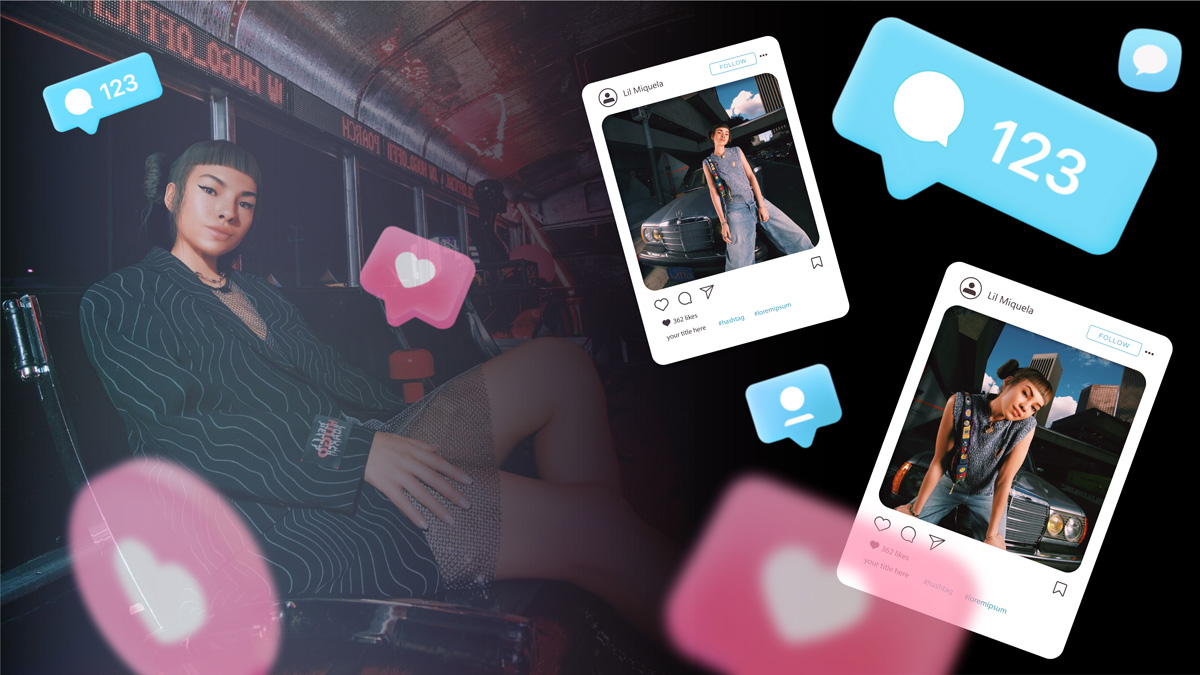
The global market for virtual influencers is projected to grow at a remarkable compound annual growth rate (CAGR) of 38.9% from 2023 to 2030. In contrast, the real influencer market is expected to grow at a more modest rate of 17.9%. This clearly indicates that virtual influencers are not only gaining traction but are becoming increasingly popular at a faster pace than their real-life counterparts.
So, why should you pay attention? This burgeoning market presents exciting opportunities for brands and marketers to engage with audiences in innovative ways. Don’t miss out on the chance to be part of this transformative shift!
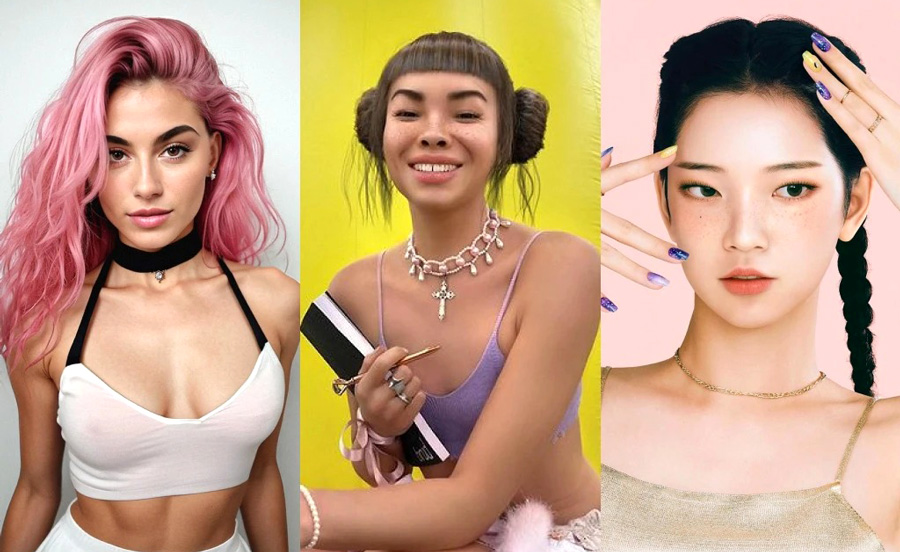
This post is all about them: what they are, what they bring to the table, what you should keep in mind when using virtual influencers, how to fully integrate them into your plans, and more.
Let’s get started!
Understanding Virtual Influencers
Before diving into marketing strategies, it’s essential to understand what a virtual influencer is: a digital persona created through computer-generated imagery (CGI). These characters are designed to resemble real people and are used for social media influence, just like their human counterparts.
Unlike traditional influencers, virtual influencers do not exist in the physical world but are managed and controlled by brands, agencies, or individuals.
They are used on social media platforms to engage audiences, promote products, and represent brands in the same way a human influencer might. Virtual influencers produce various formats of content, including videos, images, text, and voice.
The rise of virtual influencer marketing as a serious concept goes back to 2016, when Miquela, one of the most famous virtual influencers to this day, made her debut on Instagram. Since then, the phenomenon has exploded, and millions of followers have flocked to numerous virtual personalities.
Naturally, brands also saw the opportunity fueled by technological advancements, changing consumer preferences, and the increasing digitalization of our daily lives.
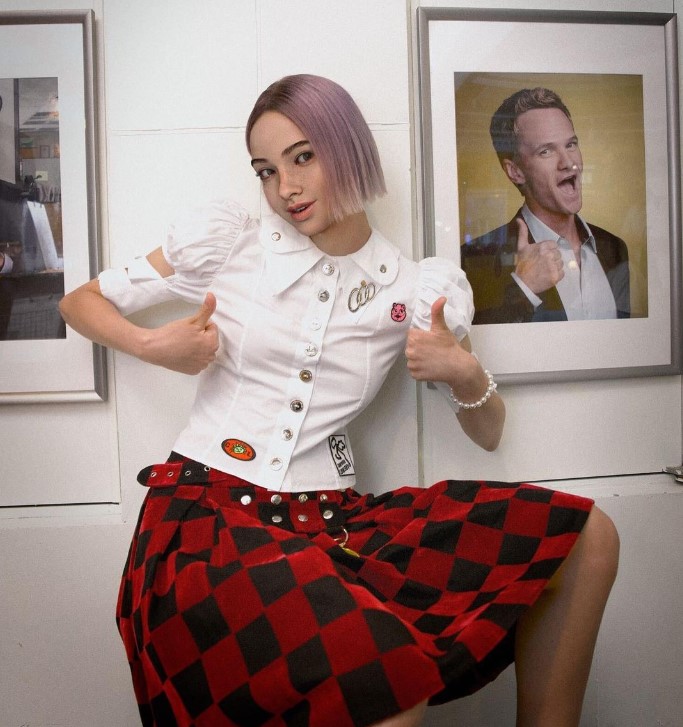
How Brands Are Using Virtual Influencers
Let’s dive into some of the most popular ways brands are putting virtual influencers to work.
Virtual Influencers as Brand Ambassadors
One of the most common roles for virtual influencers is brand ambassadorship, meaning that they promote the products and services of a particular company.
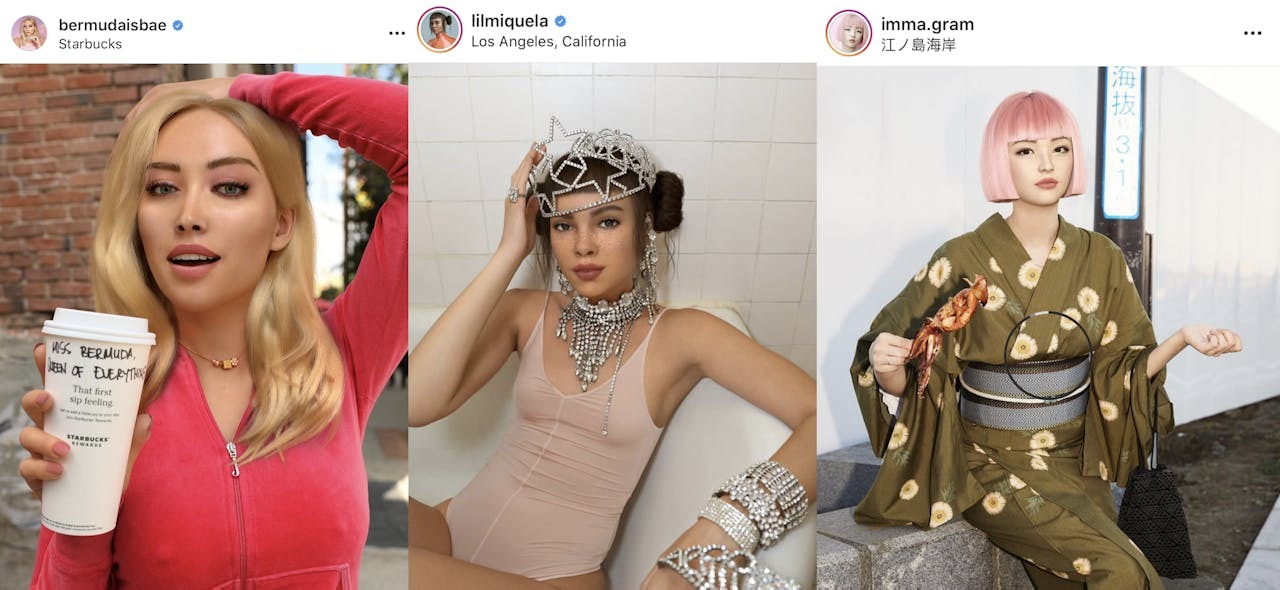
Here’s why:
- Totally On-Brand: In a sense, unpredictability is what makes us all human. That’s not the case for virtual influencers! They can be coded to stay on-brand all the time and never go off-script!
- On All the Time: Virtual influencers never get tired, so they don’t need breaks. When the humans of your brand are sleeping, your virtual influencer can keep the brand active on the other side of the world.
- Long-Term Partners: Virtual influencers don’t have the sudden (human) urge to change their looks or appearance. They don’t age, either. So, they’re perfectly reliable for long-term partnerships.
- Ultimate Flexibility: Virtual influencers are, well, virtual. You can put them anywhere and have them do the impossible right from your headquarters! “Also, feel free to change every detail whenever you want!”
Virtual influencer, as a brand ambassador, represents the brand across all mediums and channels. Sometimes, a virtual influencer is similar to a brand mascot, And it has parallel advantages and benefits for the brand. More importantly, it can help humanize the brand and create a deeper emotional connection with the audience — here’s how.
Use Virtual Influencer as a Social Media Character
For example, imagine a virtual influencer for a fashion brand. Instead of simply promoting new collections, the influencer could be styled as a fashion-forward individual with a passion for sustainable clothing. Their posts could include behind-the-scenes looks at their “favourite” fashion pieces, tips for sustainable living, or even personal stories about their love for eco-friendly fashion. These elements help humanize the influencer and foster a deeper connection with followers.
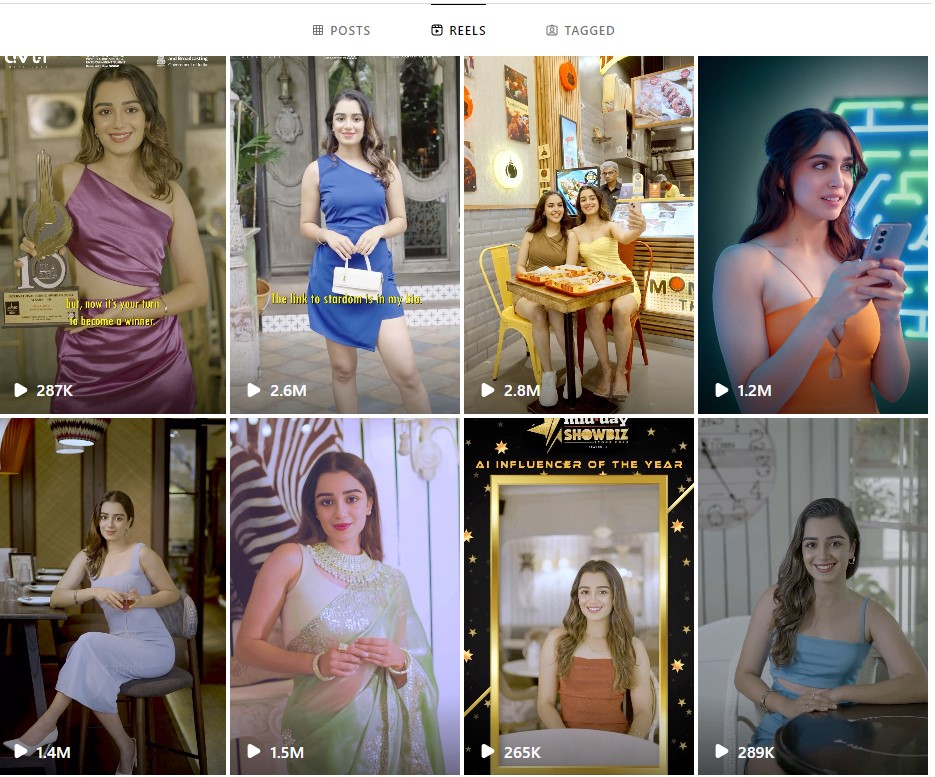
If a brand wants to create a virtual influencer for social media content, it can develop a character that appears in videos, speaks, and acts based on prewritten scenarios.
Product Launches with a Digital Twist
Virtual influencers have a knack for creating buzz. If you’re not sure, take a look at Top Virtual Influencers to get a better idea. And buzz is something we could all use for product launches!
Imagine your new product featuring a dedicated virtual influencer to increase brand awareness and catch attention. This character will attend the product launch event, and content centered on it will be produced.
Here’s why these virtual characters work for product launches:
- Instant Attention: Let’s face it—novelty sells. Virtual influencers bring that unique digital edge that draws people in out of curiosity. Once they’re in, your product will stand out in a crowded marketplace.
- Tailored Storylines: We’ve covered this one before, about how you can craft engaging stories around how these digital influencers came to your brand and interact with your product, giving your audience an exciting, personalized narrative to follow.
- Seamless Cross-Platform Promotion: Social media are digital, and so are your product launch assistants. Virtual influencers can integrate flawlessly from Instagram to TikTok and VR spaces to amplify your product’s reach.
- Real-Time Adjustments: There’s no learning curve with these digital characters. Just adjust them based on what’s working and what’s not, and they’ll learn and implement those adjustments right away.
Educate People About Products and Services
Virtual influencers aren’t just selling and advertising products out there—they’re also educating audiences on brand matters and important issues in the world today.
Here’s how they’re making an impact:
- Simplifying Complex Topics: Ever go to ChatGPT for an eli5 discussion on a big problem? Virtual influencers are doing the same thing for their audiences, sometimes for a shiny new gadget and sometimes for widespread issues like global warming.
- Handling Sensitive Subjects: AI has evolved to be able to talk about sensitive issues, partially thanks to the many lawsuits and misunderstandings it created during its initial boom. As a result, your virtual influencers can also handle sensitive issues without making them too personal or uncomfortable.
- Reaching Younger Audiences: Young people are all about change, and what change is better than virtual robots? Children, teens, and young adults might just find virtual influencers (i.e. your brand ambassador) fascinating.
- Consistency is Key: Adults also like change. Still, when spokespeople or ambassadors change, it comes across as a little dramatic and might hurt your brand’s messaging. Virtual influencers don’t have that problem; they change when you tell them to.
A prime example of this is the World Health Organization turned to Knox Frost, a virtual influencer who helped spread COVID-19 safety tips during the pandemic.

Virtual influencers can be used in the customer onboarding process and education. Specifically, if a product is complex and needs a tutorial before using it, a virtual influencer can act as an advisor.
Entertainment’s New Digital Stars
The entertainment industry has embraced virtual influencers with open arms. After all, they can blend fantasy and reality, something that movies and video games have always strived to do.
Here’s where they’re popping up:
- Virtual Events: Virtual concerts, digital conferences, webinars, etc. You name it, virtual influencers can make it more immersive, interactive, and fun!
- Music: Virtual musicians and bands like K/DA, a virtual K-pop group, have gained massive followings and even found their way into song charts. It’s a perfect example of how virtual influencers can truly engage audiences in the entertainment world.
- Gaming: Virtual influencers can be non-playable characters (NPCs), in-game guides, and even hosts of video game tournaments. Gamers love them, and they’re doing a great job enhancing player experiences.
Intrigued about all the use cases? Read on for an overview of the strategy you should employ when bringing virtual influencers to your own business.
Virtual Influencer Marketing Strategy
It’s essential to highlight two key options: brands can either collaborate with pre-existing virtual influencers or choose to create a custom influencer tailored specifically to their business needs.
To better understand the practical strategies of using virtual influencers in the real world, let me share a real example from one of our clients at Dream Farm Agency.
We had a lead who wanted to collaborate with a virtual influencer on social media to introduce their products to customers and run long-term campaigns with the influencer.
After providing insights and data on the active virtual influencers worldwide, we presented an alternative suggestion.
Based on the following reasons, we suggested the client to create their own dedicated virtual influencer and use it exclusively for marketing campaigns:
- Complete alignment of the influencer with the brand’s image and values
- Full control over all content and behavior
- Reduced long-term costs
- Independence from avoidance of limitations that might come with pre-existing influencers
- There is no restriction on the amount of content produced
After analyzing the costs and benefits of creating a custom influencer versus the expenses of running campaigns over a year, the client concluded that designing and building their own was in their best interest.
Also, if you are looking for a comprehensive virtual influencer creation and marketing solution, Dream Farm Agency can help! Whether it’s for a new brand launch or using a virtual character as a social media influencer, we’ve got you covered.
A successful virtual influencer campaign starts with a well-thought-out strategy. The first and most crucial part of this strategy is the creation of the influencer itself. While we’ll outline the key steps below, you can follow our complete, in-depth guide on how to create a virtual influencer for a detailed walkthrough
1. Create a Story Universe and Character
The foundation of any successful virtual influencer is storytelling. This isn’t just a side aspect—it’s the core of how we create emotional connections between the audience and the influencer. Social media engagement and virality are deeply tied to the story behind the character. People don’t just follow influencers because of what they say; they follow because of the stories they embody—their personal dramas, journeys, and experiences. This emotional connection is the fuel for real engagement.
To develop a captivating virtual influencer, we focus on crafting a rich and relatable backstory. Questions like “Who is this character?” “What is their journey?” and “What motivates them?” are crucial. A well-crafted story makes the character feel alive and authentic, even though the audience knows they are digital. This level of depth allows audiences to resonate with the influencer’s personal struggles, achievements, and values, driving stronger connections.
Once the narrative is clear, we align the character’s voice and tone with the brand’s image. The influencer’s personality should reflect the brand’s values and aspirations, making the connection between the two seamless. Whether the influencer is bold and adventurous or empathetic and caring, their characteristics should be consistent and reflective of the broader story they are telling.
In addition to their backstory and personality, the influencer’s journey plays a key role in driving engagement. Audiences want to see growth—personal victories, challenges overcome, and milestones achieved. This evolution makes the character’s narrative dynamic and invites audiences to be part of the ongoing story, fostering long-term engagement and loyalty.
By intertwining storytelling with the influencer’s daily content—be it through posts, videos, or collaborations—audiences feel they are not just following a character but becoming part of their journey. This is what makes social media audiences stay engaged and keep coming back for more.
The result? A virtual influencer who is not only a brand ambassador but also a character that resonates emotionally with the audience, creating deeper, lasting engagement.
2. Design Appearance of Virtual Influencer
The appearance of a virtual influencer plays a pivotal role in creating a strong connection with the audience and establishing the right brand image.
For instance, if you’re promoting a fitness product, don’t just talk about workouts—make sure the influencer is showing off those killer abs. If it’s a beauty campaign, we need glam, we need glow—we need the beauty! And if you’re promoting a restaurant, why not have a chubby influencer who loves food and can make people laugh?

In this step, all details are important. For instance:
- Outfits and Styling
- Hair and Makeup
- Body Language and Movement
- Distinctive Facial Features and Style
By tailoring the virtual influencer’s appearance to fit the product and audience, we ensure that their visual identity enhances the brand’s message, making them more engaging and relatable. Each design decision—from facial expressions to wardrobe—helps reinforce the story and emotional connection we aim to build with the audience.
After the designing process, we convert sketches to a model.
3. Develop a 3D model
Developing a virtual influencer 3D model involves several technical steps that blend artistry, animation, and programming. First, the process begins with conceptualization and design: artists create sketches or digital designs to define the character’s appearance, personality, and style. Once the concept is approved, a 3D modeler uses software such as Blender, Maya, or ZBrush to sculpt the character’s body, face, and clothing in three dimensions.
Want to make your brand stand out in a fresh and exciting way? A virtual influencer could be the game-changer you’re looking for.
If you’re ready to create a digital character that connects with your audience, we’re here to help.
Get in touch today to start building a virtual influencer that truly speaks to your fans.
Learn more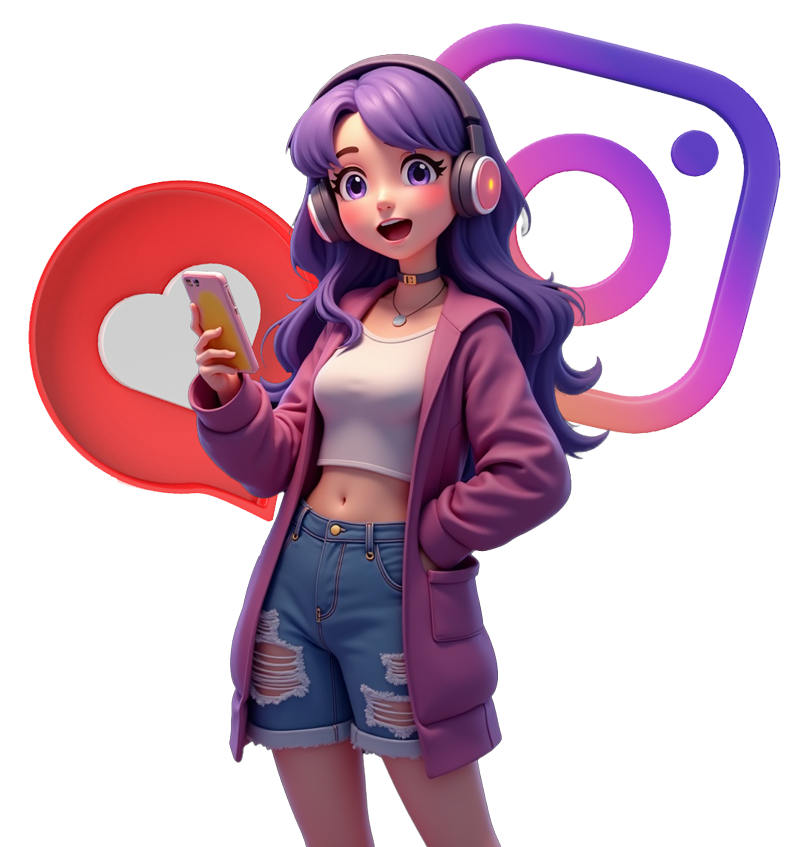
This process involves careful attention to details like proportions, textures, and facial expressions. Afterward, the model is textured with colors, materials, and fine details like skin pores or fabric textures, and rigging is applied, which involves creating a skeleton-like structure beneath the surface to control movement.
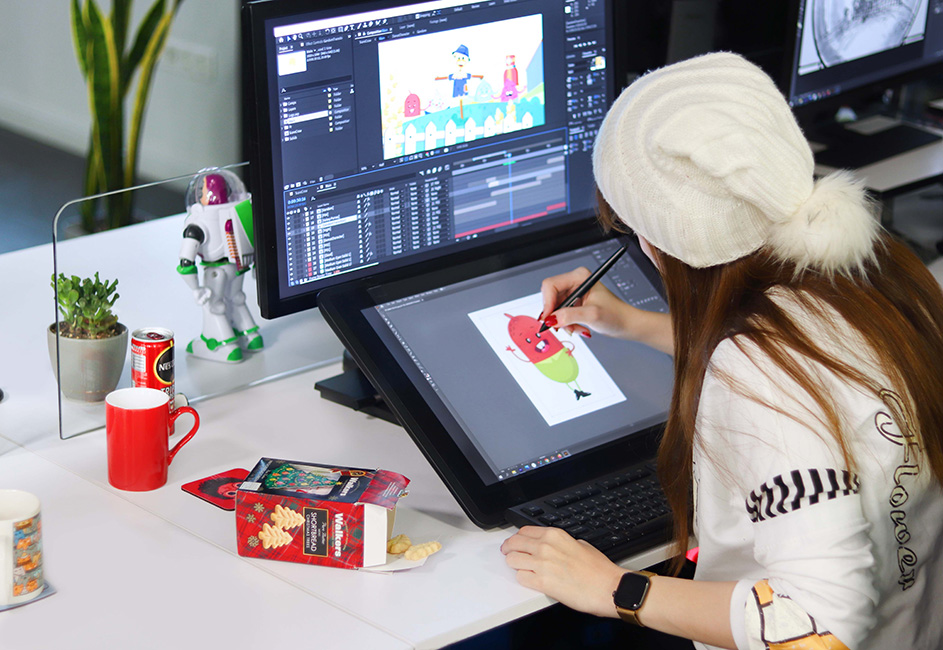
Next, the character undergoes animation and rendering. Animators use rigged models to craft lifelike movements, including facial expressions, body gestures, and lip-syncing for speech. The model is placed in various environments using tools like Unreal Engine or Unity, where lighting, shadows, and physics are added to ensure realism. Motion capture (MoCap) or manual keyframe animation is often used to create the character’s gestures, making them interact more naturally with virtual spaces.
4. Integration with AI engines (optional)
This optional final step is what truly separates a standard virtual influencer from a true AI influencer. For a detailed breakdown of the difference between AI and virtual influencers, our in-depth guide covers all the key distinctions and use cases
The final step includes integrating the model with an AI infrastructure like AI engines or API allowing the virtual influencer to create visual content like videos and images and “interact” with audiences via pre-programmed responses or AI-powered systems, giving it a human-like presence in digital spaces.
Integrating AI with virtual influencers can significantly enhance engagement by allowing real-time interactions and personalized responses. This makes the influencer feel more human and responsive, boosting audience connection. AI can also adapt content based on audience behavior, optimizing performance by tailoring posts and interactions to what resonates most with followers.
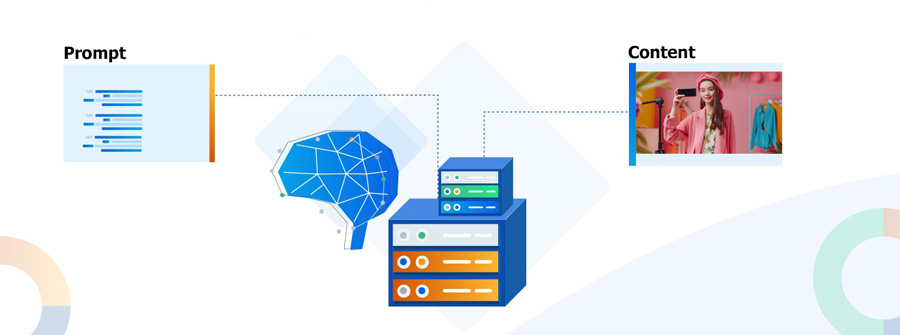
For example, an AI-powered virtual influencer promoting a skincare brand could host a live Q&A session, offering personalized product recommendations to viewers based on their skin type or concerns. This interactive, real-time engagement not only adds value to the audience but also deepens the connection with the brand.
During this stage, a series of tests and debugging procedures are executed to verify the operational effectiveness of the virtual influencer.
5. Virtual Influencer Promotional Plan
While creating a virtual influencer is an exciting and innovative strategy, simply developing the character without a robust promotional plan won’t generate the desired results. To maximize the impact, it’s essential to have a comprehensive promotional strategy in place that will boost the influencer’s visibility, increase brand awareness, and engage the target audience.
Here’s a breakdown of the key strategies:
Advertising and Paid Ads
To give your virtual influencer the exposure they need, targeted advertisements and paid campaigns are a must. Platforms like Instagram, TikTok, and YouTube are ideal for this, as they host the very audiences that engage with influencer content the most. By implementing paid campaigns, you can ensure that the influencer reaches a broad but relevant audience, quickly gaining traction in the competitive social media landscape.
For instance, if your influencer represents a fashion brand, you could run Instagram ads showcasing them wearing the latest collection. These ads could direct users to the influencer’s profile, where they can engage with more content and follow the account.
PR Campaigns
A strong PR campaign will help introduce your virtual influencer to the world. Highlighting the uniqueness of the virtual influencer—such as being the first virtual influencer in a specific niche—can make headlines and create buzz. Press releases, interviews, and feature articles in both digital and traditional media can amplify your message.
For example, a virtual influencer focused on environmental activism could be featured in newsletters and media outlets dedicated to sustainability, emphasizing the innovation and unique approach of using a digital character to promote eco-friendly products or causes.
Cross-Promotional Content
Collaborating with established influencers is another powerful way to grow your virtual influencer’s following. By partnering with human influencers or other virtual influencers, you can tap into their audience base and create engaging, shareable content that expands your reach. These collaborations can take the form of joint social media challenges, co-hosted events, or even fun Q&A sessions.
For a detailed guide on partnership models and outreach strategies, our article on how to collaborate with virtual influencers provides a complete walkthrough.
For instance, if your virtual influencer is promoting a healthy lifestyle, collaborating with a popular fitness influencer could involve a workout challenge or a shared health journey, appealing to both sets of followers and driving mutual engagement.
By utilizing advertising, PR, and cross-promotion strategies, your virtual influencer can quickly gain visibility and establish themselves as a key player in the influencer space, increasing your brand’s recognition and influence.
6. Content Creation & Social Media Management
So, you have your virtual influencer. Now’s the time to focus on the content it will create and how it will manage your social media accounts. It’s important to know that while quality AI-powered influencers need minimal supervision, you still can’t leave them on autopilot.
The trickiest part here is striking the balance between the influencer’s “life” and promotional content. Think of these items for your influencer’s content strategy:
- Regular lifestyle updates and behind-the-scenes content: This type of content should be heavier than others, just like human influencers.
- Collaborations with other virtual or human influencers: These initiatives might be a little slow due to all the DMs, emails, and paperwork, but they’re definitely worth it. Start by listing all your existing partners and viable collaborative efforts.
- Product reviews and brand endorsements: Sprinkle some of these in, and you will see that coveted profit!
- Participation in trending challenges or discussions: This one is easy to forget among all the other efforts, but social media is full of trendy challenges, and users will expect your virtual influencer to participate in them.
Put these and any other content types in a calendar draft, and let’s ensure that they all appeal to your audience.
7. Audience Engagement & Interaction
Social media is built around engagement, so always keep it in mind. AI-powered virtual influencers may be able to engage with your audience in live sessions, but here are some easier actions to have in mind as well:
- Respond to comments and direct messages
- Host polls
- Use Q&A boxes
- Promote your brand’s interactive initiatives like interactive experiences
- Share user-generated content and fan art as soon as you see them
Everyone knows that your virtual influencer is just ones and zeros, but the key is to maintain the illusion of a real person behind it!
8. Measuring & Optimizing Performance
This is no longer a best practice; it’s a must. Before executing your strategy, know how to measure success or failure. Ask yourself what you expect virtual influencer marketing to bring you. Here are some things you can do to ensure you’re on the right path:
- Use analytics tools to track engagement, reach, and conversion rates
- Conduct regular audience surveys
- Always A/B test different content styles and messaging to optimize performance
To sum up, a comprehensive virtual influencer marketing strategy requires careful planning, consistent execution, and ongoing optimization.
What’s Next? The Future of Virtual Influencers
This guide has covered what you need to know about virtual influencer marketing today. But this field is evolving at lightning speed. To stay ahead of the curve and see what’s coming next—from hyper-realistic avatars to AI-driven narratives—be sure to read our in-depth look at the future of virtual influencers.
Costs of Virtual Influencer Marketing
Again, what do you expect virtual influencer marketing to bring you? “Profits” is the first answer that pops into many business owners’ minds but we should calculate costs earlier.
It’s important to know where the expenses lie when creating and integrating a virtual influencer. That’s what this section is about.
Initial Development & Creation Costs
The upfront costs of virtual influencer marketing primarily revolve around developing and creating the digital character. This process typically involves:
- Conceptualization and character design, which is primarily a creative step
- 3D modeling and texturing, which is a mix of technique and creativity
- Rigging and animation setup, which is mostly a technical endeavor
- AI training (if applicable) to make the character more autonomous
- Voice acting (if applicable) to synthesize the character’s voice
Contrary to what some online videos may suggest, the process is complex and requires expertise. This is still cutting-edge technology, and it’s extremely easy to tell the difference between a virtual influencer made with ten clicks and one that has gone through the due creative and technical processes. The final costs vary greatly based on how sophisticated your influencer is. We can give you an estimate if you reach out!
Ongoing Maintenance & Content Production Expenses
Once the virtual influencer is created, ongoing costs include:
- Social media and community management
- Hardware costs, including servers used for rendering and AI platforms fee
- Regular updates to the character’s appearance or style
These expenses can vary widely based on the frequency of content production.
Traditional vs. Virtual Influencer Marketing Costs
As we’ve mentioned, virtual influencers offer:
- Much less expenditure on content creation,
- Complete control over the influencer’s availability and output,
- No travel or accommodation expenses, and
- No need for physical photoshoots or video production setups
While virtual influencers cost more upfront as we’ve just discussed, they make more financial sense in the long run, especially for large-scale global or long-term campaigns.
Traditional human influencers may charge anywhere from $50 to $1 million or more per post, depending on their follower count and engagement rates. In contrast, once you establish your virtual influencer, the cost per post will be much lower.
Benefits of Virtual Influencer Marketing
If virtual influencers are so like their human counterparts, what makes them different and popular? This section is dedicated to a rundown of the benefits of virtual influencer marketing for your business.
Cost-Effective Content Production
This is the main advantage of virtual influencer marketing. Human influencers need travel accommodations, physical photoshoots, and on-site preparations. On the other hand, virtual influencers create content without those factors or any other physical needs. For example, they can appear in a company’s settings without the need for physical relocation.
Virtual influencers are entirely digital, so digital content comes easier for them. They’re also faster than human influencers, meaning you can count on rapid production and iteration. So, virtual influencer marketing essentially means more content at better prices. The savings are always significant, especially if you’re planning for long-term campaigns or want regular content updates.
Trendsetting & Attention-Grabbing Potential
We may see hundreds of human beings every day, but we don’t see as many virtual influencers! As we mentioned, these new digital characters often come with futuristic looks. Naturally, if you see one while you’re doomscrolling, you may stop out of curiosity. (You can find some examples in their dedicated section below.)
Plus, you will remember that virtual influencers are made for a specific niche. If you’re in the target audience of one of them, there’s a strong chance that you’ll like their character traits, appearance, etc.
Put all of these thought-out points together, and you have an inherent appeal in these digital personalities, which leads to increased engagement rates and viral potential in your virtual influencer marketing efforts.
Flexibility & Control Over the Influencer’s Image
Human beings have their own opinions and values, which also show in their appearance and demeanor. To collaborate with a human influencer, a brand will need to consider many options, weigh their choices, and opt for those closest to their business. Still, that would rarely be a perfect match.
That may also happen in virtual influencer marketing if you choose to collaborate with influencers already out there. In our experience, that’s a long shot. Many virtual influencers don’t respond, some aren’t a match for your business, and you will be left with very limited options.
We believe your best option is to create a virtual influencer that perfectly aligns with your brand, and that’s where you will taste this third benefit. Fine-tuning this digital personality of yours will give you unparalleled control over the influencer’s image, behavior, and messaging. This helps promote your brand values, reach campaign objectives, and minimize the risk of off-brand behavior or controversial behavior or statements.
Don’t know where to begin? Get your own virtual influencer from us!
24/7 Availability & Consistent Messaging
Virtual influencers don’t need to eat, sleep, or attend family emergencies. As a result, they’re available around the clock. They also have no problem running multiple campaigns across various time zones around the globe!
No fatigue, confusion, or distress allows virtual influencers to focus solely on campaign goals and brand messaging. In time, this consistent messaging, with the aid of AI, will help build a trustworthy, recognizable brand.
Conclusion
Virtual influencer marketing is rapidly transforming how brands connect with their audiences, offering a fresh and innovative way to drive engagement, brand awareness, and loyalty. With their customizable nature, cost-effectiveness, and 24/7 availability, virtual influencers can help brands stay ahead of trends while providing consistent messaging.
Thinking About a Virtual Influencer? Here’s Your Next Move:
Virtual influencers add an eye-catching, modern twist to your brand’s marketing efforts. They have the power to spice up your social media presence, attract attention, and keep audiences engaged. If you’re considering integrating a virtual influencer into your brand strategy, you have two choices:
You can either collaborate with an existing virtual influencer (just be sure their style and niche align with your brand), or you can create a custom influencer tailored specifically to your brand’s unique voice, story, and goals—ensuring a perfect fit.
Whatever you choose, we’re here to guide you every step of the way. Let’s chat about how virtual influencers can elevate your brand, and together, we’ll determine the best strategy to achieve your objectives. Visit our Virtual Influencer Creating and Marketing service page.
Explore More About Virtual Influencers
- Top 50 Virtual Influencers to Follow
- What is an AI Digital Human?
- Using Virtual Influencers in Video Content
- Humanize Your Brand with Virtual Influencers
- Mascot vs. AI Character vs. Virtual Influencer
- Modern Virtual Assistants for Brands
- What is a Virtual Model?
- The Relation Between Virtual Influencers and Mascots
- What is an AI Fashion Model?
- Virtual Mascots: How AI is Redefining Brand Mascots
- What is an AI Fashion Model?
Arya
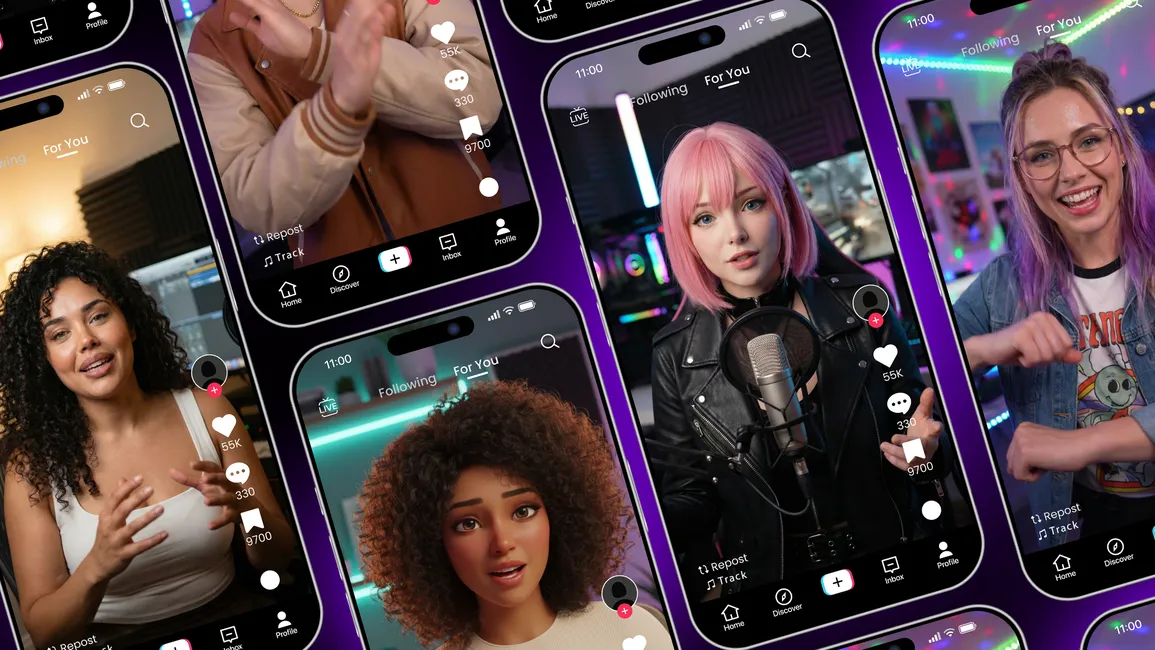
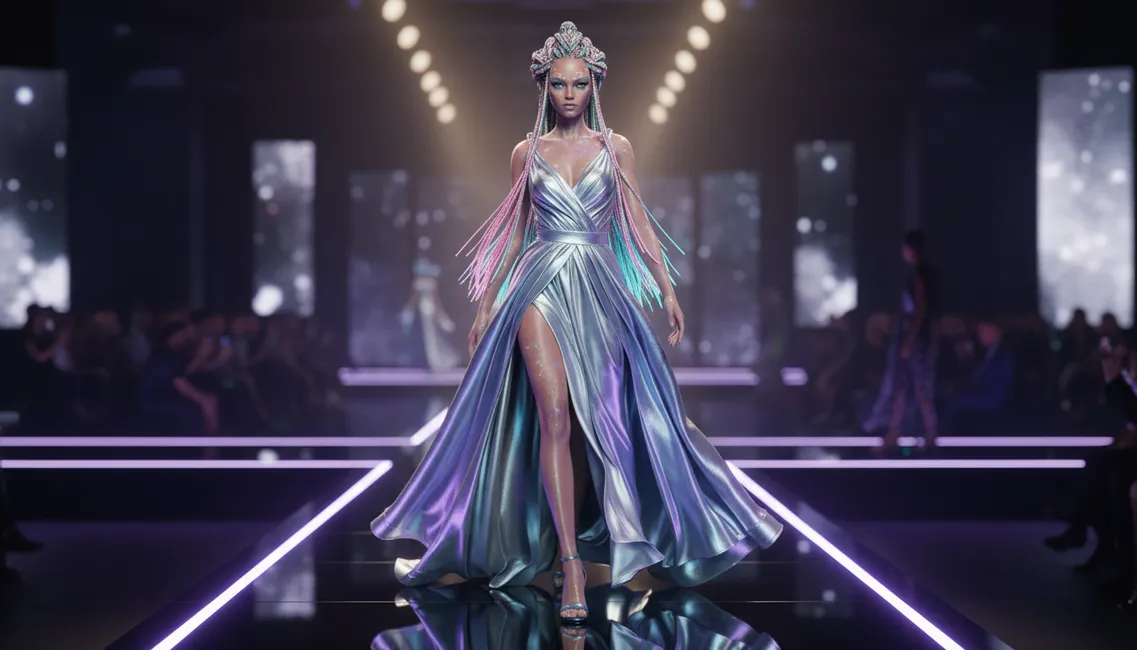

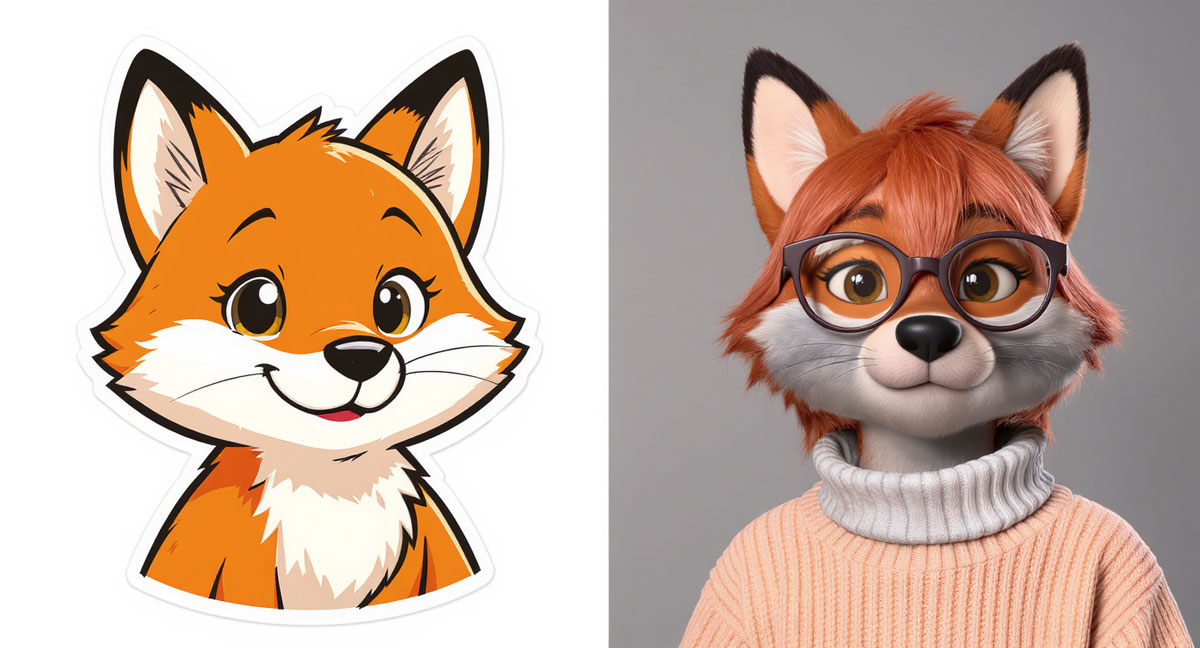
Very intriguing! What key metrics should businesses track to measure the success of their virtual influencer campaigns?
To measure virtual influencer campaign success, track engagement, reach, brand awareness, conversions, and ROI.